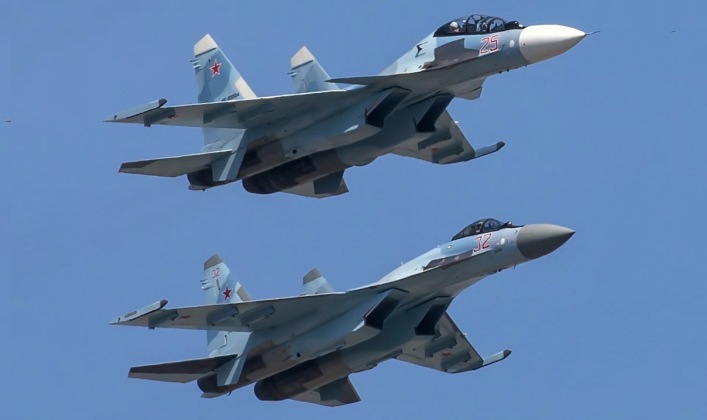News
Iran Could Soon Field 64 Su-35 Fighters Under $5 Billion Deal: Will Russia Cut Domestic Orders?
As Iran and Russia strengthen their defence ties and Russia begins to make active use of Iranian drones in combat in Ukraine, a growing number of sources have begun to refer to the possibility that Iran could acquire 64 Russian Su-35 fighters under a major contract. Commander of the Air Force of the Islamic Republic of Iran General Hamid Vahedi announced on September 4 that the service was considering Su-35 acquisitions, with the numbers then unconfirmed. There was some speculation that approximately two dozen airframes built for Egypt, which due to Western threats of economic warfare against Cairo are thought to have been suspended, could furnish the Iranian fleet quickly, although whether further Su-35 units would be considered afterwards was uncertain. There has been considerable speculation from Western sources that Russia could exchange the fighters for Iranian drones, of which it is expected to have received over 1000 by early October and significantly more going forward, allowing both defence sectors to synergise their complementary strengths.

An export of 64 Su-35s would be a major boon to the Russian defence sector and could well see current production for the Russian Air Force suspended, with recent domestic orders having been placed largely to avoid closure of production lines. The Su-35 was originally developed for export only, with domestic acquisitions then planned at 100 aircraft with 100 more expected to be built for export. Deterioration of relations with the West and a resulting escalation in Western powers’ use of coercion to threaten potential clients for Russian equipment such as Indonesia and Egypt was a key factor preventing further sales, as was competition from the Su-30SM which provided many of the same capabilities at a much lower cost. As a country already under heavy Western economic sanctions, and facing threats from possible Western or Israeli attacks on its nuclear infrastructure in particular, Iran is unlikely to be deterred from acquiring Su-35s should it consider the acquisition an effective means of furthering its security interests. A primary barrier to acquisitions – the cost of around $1 billion for every twelve aircraft – could well be circumvented by the revenues from drone sales to Russia. An Acquisition of 64 aircraft is expected to cost approximately $5 billion, although the cost and quantities of the drones exported to Russia remains uncertain.
Iranian forces have frequently fought under the cover of Su-35s during operations in Syria alongside Russian forces, and interest in the aircraft has long been speculated although a UN arms embargo until October 2020 was a key barrier to such sales. The Su-35 has since gained an impressive combat record over Ukraine, albeit against much older early fourth generation MiG-29s and Su-27s far inferior to the fighters Iran would face in the event of a U.S.-led attack. Some assessments have highlighted that acquiring larger numbers of smaller fighters such as the MiG-29UPG with similarly advanced avionics and weaponry could be a much more cost effective means of strengthening Iran’s air defences.

A sale of 64 fighters, alongside 24 already sold to China, would bring exports to 88 fighters with others potentially following. The possibility of Iran placing followup orders for the Su-35 after initial batches are delivered also cannot be ruled out, allowing it to replace its ageing F-4 and F-5 fleets acquired in the 1970s as well as Su-24 and Mirage F1 jets acquired in the early 1990s. The viability of the Su-35 for Iran’s defence remains in question, however, as neighbours including Israel and Russia move to field more fifth generation stealth fighters such as the F-35 and Su-57 while the United States and China are expected to field the first sixth generation fighters from around 2030. While the Russian Su-57 is set to integrate a range of sixth generation technologies to compete on a ‘5+ generation’ level, the older Su-35 as a ‘4++ generation’ fighter is expected to be obsolete against upcoming sixth generation fighters. The fact that the Su-57 is still being produced on a relatively small scale, meaning it cannot be immediately made available, and its significantly greater cost than the Su-35, are important factors in the favour of the older fighter.












